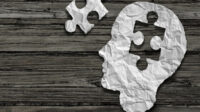The Psychiatry Board Exam is on the difficult side, with a pass rate dipping as low as 75%. It’s important to train on different types of questions to understand the pacing of the content, as well the difficulty level of the exam. Test your knowledge with some sample Psychiatry Board Review practice questions!
We suggest using question banks to reinforce concepts and engage with simulated test conditions. BoardVitals helps you get ready for the boards with more than 1,450 practice Psychiatry test questions for your initial certification exam.
Sample Psychiatry Board Questions
Question 1. Substance Related Disorders QID 32929
You are seeing a 68-year old woman with a history of chronic alcohol abuse in the ED. She presents with confusion. On exam, she is tachycardic, hypothermic, and has an ataxic gait with foot weakness, and foot drop. What is the most likely diagnosis?
A. Wernicke’s encephalopathy
B. Korsakoff’s syndrome
C. Alcoholic hallucinosis
D. Delirium tremens
E. Alcohol intoxication
Answer: A. Wernicke’s encephalopathy.
Explanation:
Wernicke’s presents with neurological symptoms caused by biochemical lesions of the central nervous system after exhaustion of thiamine (vitamin B1) reserves. The classical presentation of Wernicke’s encephalopathy is characterised by the triad of: ophthalmoplegia, ataxia, and confusion but only 10% of patients exhibit all three features. Other symptoms include: hypothermia, hypotension, peripheral neuropathy, weakness, amnesia, hyperhidrosis, foot drop, and decreased proprioception.
Korsakoff’s usually presents with amnesia, confabulation, apathy.
Alcoholic hallucinosis involves auditory and visual hallucinations, usually accusatory or threatening ones. It can occur during acute intoxication or withdrawal from alcohol.
Question 2. Mood Disorders QID 14255
A 19 year-old patient presented with his first manic episode and was started on lithium. Day two into his admission he experiences motor excitement, mutism and stereotypic movements. Lorazepam was trialed for two days and was not effective. What is the next best treatment?
A. Atypical antipsychotic
B. Increase the lithium dose
C. ECT
D. Switch to valproate
E. Discontinue all medications and start IV fluids only
Answer: C. ECT.
Explanation:
Up to one third of manic patients will develop catatonic features as described by negativism, withdrawal, staring, immobility/stupor, mutism, posturing, grimacing, stereotypies, mannerisms to non-purposeful excitement, undirected combativeness, unexplained impulsive behavior, echopraxia and echolaliamotor excitement, bizarre grimacing, and waxy flexibility (among others). Per the DSM-5, at least three of the above-mentioned manifestations must be present to include a catatonia specifier.
There is a stong evidence-basis for treatment with Lorazepam and ECT. Patients generally respond well to benzodiazepines with lorazepam having the most evidence. If there is not a good response, ECT should be strongly considered as it is an effective treatment for catatonia.
When the diagnosis of catatonia has been made, the use of antipsychotic and/or antidepressant medications should generally be avoided. Antipsychotics can worsen catatonia due to parkinsonian side effects and can increase the risk for neuroleptic malignant syndrome. A change in mood stabilizer dose or a change to another mood stabilizer has not been shown to be an effective treatment in catatonia.
Reference:
Catatonia in a patient with bipolar disorder type I J Neurosci Rural Pract. (2014) Jul-Sep; 5(3): 314–316. American Psychiatric Association. (2005). American Psychiatric Association practice guidelines. Practice Guidelines for the Treatment of Patients with Bipolar Disorder. Arlington, VA: American Psychiatric Publishing.
Need more practice? The BoardVitals Psychiatry Question Bank has more than 1,450 multiple choice questions formatted to the content outline for the American Board of Psychiatry and Neurology (ABPN) Psychiatry Certification Exam and the PRITE® (in-service exam). Sign up for a free trial today!




